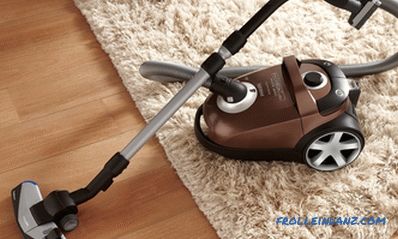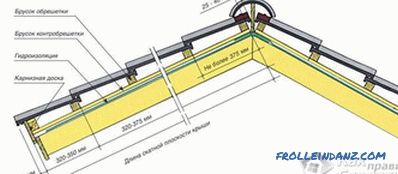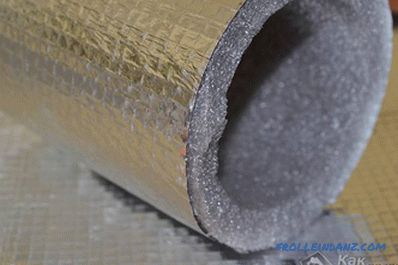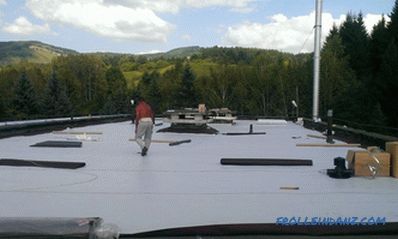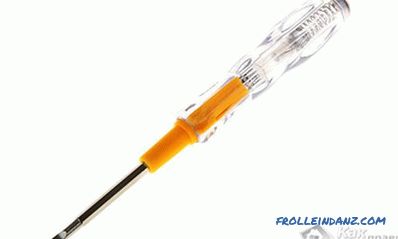Cork floors that are popular in the West are not yet very common in our country. And in vain, because cork is a natural material, perfectly absorbing sounds and retains heat. In addition, it is believed that the cork covering is, in fact, an orthopedic coating that helps reduce the load on our spine. As you can see there are a lot of pluses.
If you decide to independently perform the work on the installation of this wonderful coating, then you should carefully study the instructions.
Preparing the base
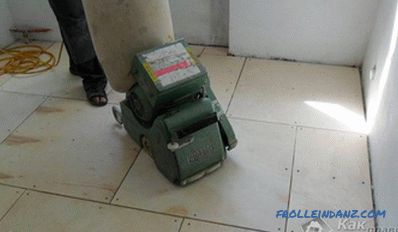 Grinding a plywood base
Grinding a plywood base
So that your cork floor does not become suddenly bulging or loosening, you should lay it on a perfectly flat surface. There are several ways to align.
Plywood base. Moisture-proof plywood sheets are fixed to a concrete screed, then sanded. If the coating laid on plywood has a finished cork bottom layer, then there is no need for a substrate.
Linoleum. Laying on linoleum is possible only if the floor is perfectly level under it. On linoleum there is no need to lay the substrate.
Coupler. The most common way to prepare the base before installing the floor. After drying, the concrete screed is leveled with a grinding machine, plastic film is covered, and only then the substrate.
Methods of laying
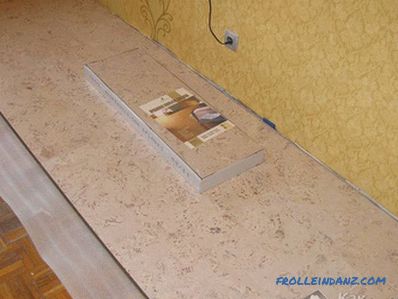 Method of laying the floor with cork
Method of laying the floor with cork
There are two options for laying cork flooring:
- castle;
- adhesive.
Faster laying is provided by locking method , but it can only be used for a perfectly flat base. The disadvantage of this option is that the floors of this type (due to the "floating" technology) can only be connected through the sills, even when the same type of cork is placed in all rooms.
By the adhesive method you can put the cork on any surfaces, including uneven ones, but after laying the floor you must always cover it with varnish. Varnish topcoat perfectly protects the coating from moisture and makes its surface monolithic. Glue floors are laid without a single nut throughout the apartment, they can also be combined with other floor coverings, for example, parquet or porcelain stoneware.
We propose to consider both ways of laying in more detail.
Adhesive cork floor
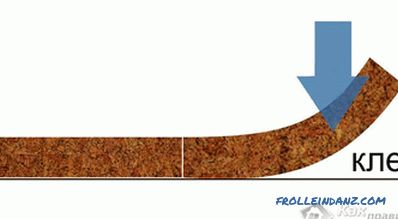 Adhesive cork laying method
Adhesive cork laying method
- Before laying must perform the layout of the room. The cork should be laid from the center of the room in the direction of the walls, so first you need to mark the center of the room and from this point draw parallel lines towards the walls.
-
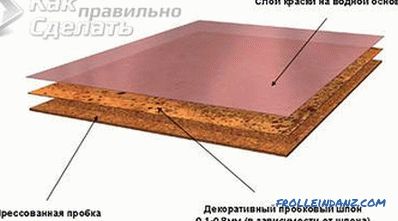 Cork floor scheme Pre-try on the plates without applying glue, as the glue quickly sets. If you notice that the tiles are laid unevenly, with some displacement, then you have to do leveling the base.
Cork floor scheme Pre-try on the plates without applying glue, as the glue quickly sets. If you notice that the tiles are laid unevenly, with some displacement, then you have to do leveling the base. - Apply contact glue to the floor surface and leave for 30 minutes. After the specified time has passed, apply glue to the underside of the plates and perform their butt-laying without gaps, pressing firmly to the base. After that, tap with a rubber hammer or roll a special roller on the surface. If glue protrudes from the plates, remove it immediately. While ensuring good ventilation of the room, the glue dries completely within 48 hours. The glue is usually applied with a notched trowel on the prepared substrate. It is desirable that this tool teeth are located at a distance of 2 mm and were triangular.
- The walls, as a rule, do not fit the whole tile - they should be cut.
- After laying, you should grind and degrease the cork floor, and then apply a protective layer of varnish or wax on its surface. The number of varnish layers depends on the material: if you purchased a cork without coating, then it should be covered in 3-4 layers, if primed, then in 1-2.
It is necessary to leave a gap of 3-4 mm between the surface and the wall. If there is a door in the room, the bottom of the door must be cut to the height of the cover.
Glueless cork floor
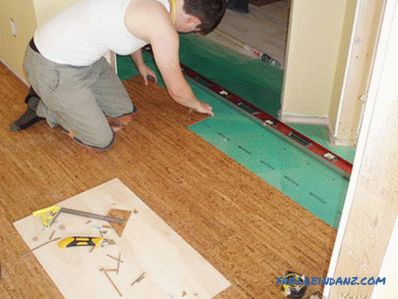 Cork laying in locking method
Cork laying in locking method
- Cork slabs with a wooden or plywood core are stacked by a floating method using locks (without using glue). Such a floor is usually supplied with the substrate and the protective layer. Plates are gently joined by snapping the lock in the same way as when laying laminate.
- Laying glue-free plates should be consistent from the edge of the wall to the opposite. At the same time to join the plates should be the method of "brickwork", preventing the junction of four plates at the same time.
- Make sure that the smaller side of the slab is parallel to the wall with the door - this way the room will appear visually stretched.
- Cork cover with varnish to protect against the ingress of water. You can also use special seal gels to seal the joints between the plates. Before covering the entire coating with a roller, apply a varnish with a brush on the edges, near the walls.
The cork floor in maintenance is unpretentious, it can be washed with a damp sponge.
We recommend reading:
- self-leveling floor (step-by-step instruction);
- how to level the floor under the laminate without a tie;
- laminate laying technology.
Video
Learn how to properly approach the choice of cork coating:
In this video you will see the process of laying glueless cork floor:
